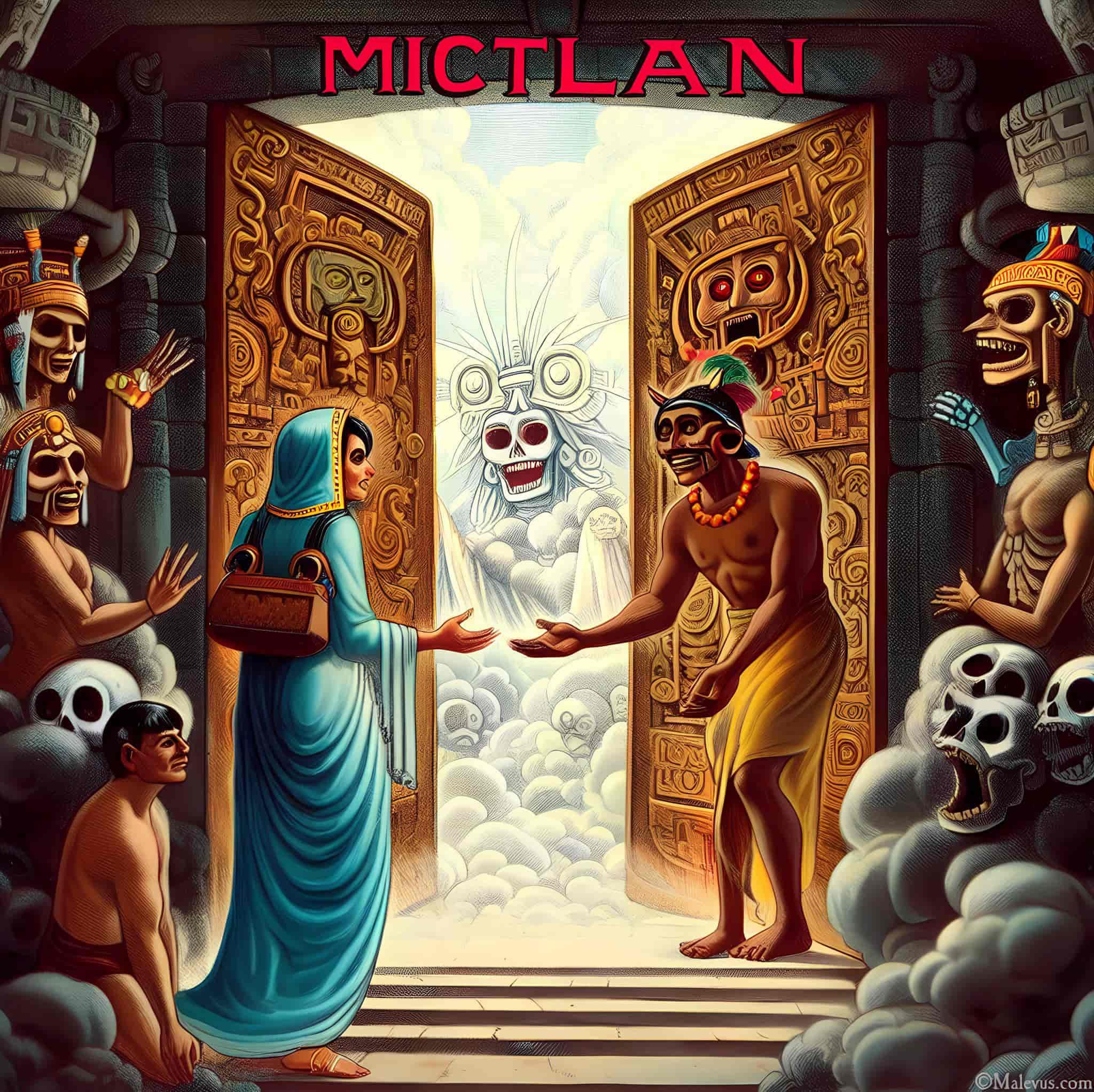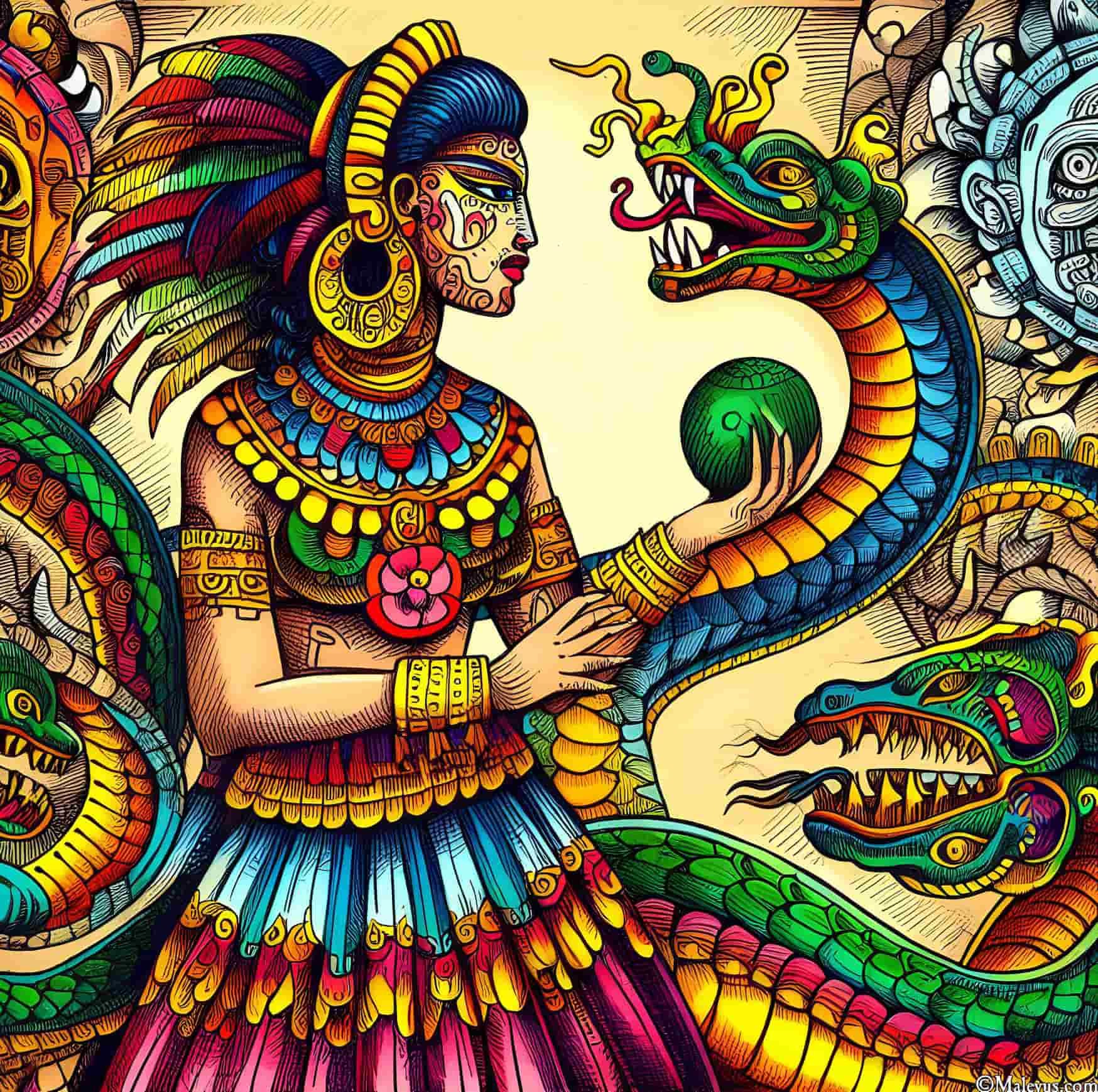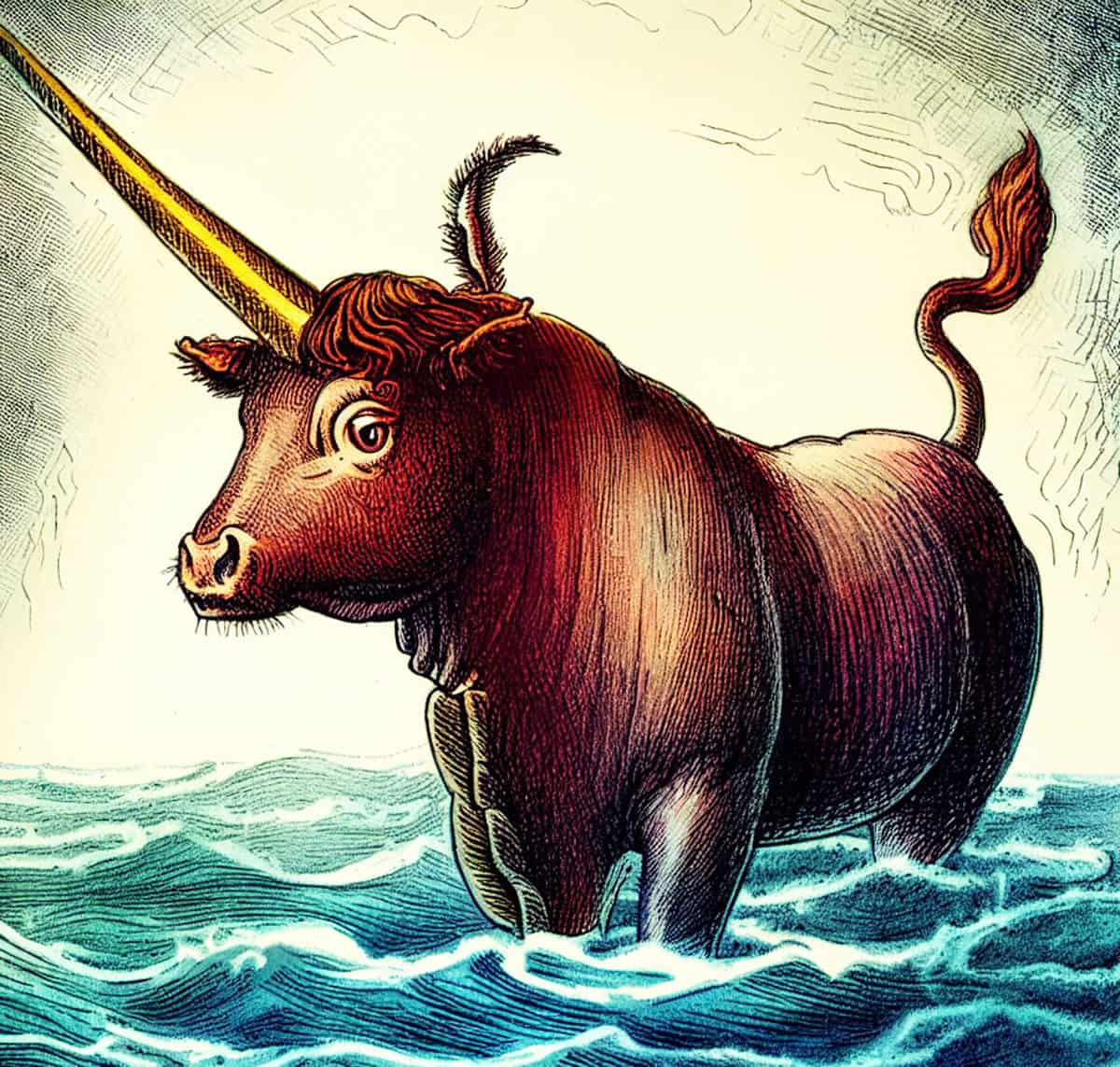The creature called Imugi (螭龍) is an imaginary animal in Korean legends, representing a creature in its state before transforming into a dragon. It is believed that after spending a thousand years in cold water, it transforms into a dragon, ascends to the sky with thunder, and flies with the legendary Yeouiju. It is said that if someone witnesses Imugi ascending at that moment, Imugi will never ascend again. There is a proverb related to Imugi, describing someone as a “failed dragon,” metaphorically referring to a person full of mischief and lacking recognition, causing harm to others.
Various spellings such as Ishimi, Mili, Youngno, Gangcheol-i·Kangcheol-i·Kwangcheol-i (強鐵), Bari, Hwalyong (虺龍), and Iryong (螭龍) exist.
The Story of Imugi
According to the story of Kim Shimin handed down in Byeongcheon-myeon, Dongnam-gu, Cheonan-si, Chungcheongnam-do, the entrance of the current Baekjeon Village has a large Zelkova tree and Turtle Rock (龜岩). It is said to be the place where Kim Shimin shot a snake, known as Sasacheo (射蛇處). On the back of the rock, there is a plaque that reads ‘Kim Clan’s Residence, Baekjeondongcheon (金氏世居栢田洞天).’
Kim Shimin, who played a significant role during the Japanese invasions of Korea (the Imjin War), was intelligent and had a tall stature from a young age. As a result, he naturally enjoyed military games and always took on the role of commander. When Kim Shimin was eight years old, he and his friends were playing a military game by the roadside. At that moment, a procession of a nobleman passed by, and the attendants asked them to make way. Kim Shimin, without faltering, exclaimed, “Even if it’s a nobleman from the capital, I cannot let him pass without going through the military gate.” Observing this, the nobleman patted Kim Shimin’s head, saying, “A strong young lad,” and peacefully walked past.
There was also an unbelievable story when Kim Shimin was nine years old. The entrance to Baekjeon Village (present-day Gajeon-ri Sangbaek Village), where Kim Shimin lived, was near the winding Baekcheon Stream (present-day Byeongcheoncheon). There was a rock submerged in the water near Baekcheon Stream, and underneath it, there was a large cave. In the cave lived a large Imugi that frequently appeared, startling people and causing harm to livestock. Kim Shimin decided to drive away the Imugi. Reading a book, he learned that snakes can be caught with a bow made of mulberry wood and arrows tipped with mugwort.
Gathering the local children immediately, Kim Shimin armed them with mulberry wood bows and mugwort-tipped arrows, and they ran to Baekcheon Stream. Placing one of the children on top of a rock at the entrance of the village, they lured Imugi with its shadow. Some versions of the story even claim that they made the child’s shadow reflect in the water to entice Imugi. When Imugi revealed itself upon seeing the child’s shadow, Kim Shimin shot an arrow with mugwort onto Imugi’s belly, hitting its vital point and capturing it. It is said that Imugi’s blood stained Baekcheon Stream red for several days after this event.
Characteristics and Origin of Imugi
Imugi is a mythical creature in Korean mythology, resembling a snake. Numerous legends about this figure originate from various regions and periods in Korea.
Characteristics
Imugi is serpent-like, hornless, and a mythical chthonic (representing the underworld) creature. Its body can be long, reaching several tens of meters, covered with scales. It cannot fly unless it captures a Yeouiju, turning into a dragon through it. Yeouiju (여의주, 如意珠) is a pearl-like object that grants its possessor unlimited power, allowing them to create as they wish.
In some stories, Imugis are considered proto-dragons cursed to be unable to fully evolve into dragons.
Others suggest that they need to live in cold water for a thousand years to transform into a full-fledged dragon. Being a chthonic being, Imugi is often found in waters such as lakes, slow-flowing rivers, or caves. Generally benevolent and helpful, encountering an Imugi is considered a sign of good luck. Despite this, it can be cruel and malevolent in some myths, causing harm to humans.
There are different types of Imugi, one of which is named Kkangcheori (깡철이, Kkangcheori). This Imugi is capable of flying even without obtaining Yeouiju.
It is said to roam in the region of Kjongjangdo, causing droughts. Known for recklessly dealing with fire, it is often regarded as a troublemaker and an evil dragon.
Origin of the Name
The term “Imugi” can be traced back to the Samguk Yusa (삼국유사, 三國遺事; “Memorabilia of the Three Kingdoms,” 1279), specifically the story of Imugi (or Imok) within the Pojang narrative. Imugi (이목, 璃目) is the son of the Dragon King of the Western Sea. In the legend, Pojang hides Imugi from the wrath of the Heavenly Lord and points to a pear tree when his envoy seeks him. Believing Imugi is there, the Heavenly Lord strikes the tree with lightning. The fall of the pear tree (이목, Imok) sounds the same as Imugi’s name, and according to oral tradition, the alternative name for a plum tree (이목, imok) also sounds the same.
Imugi Myths
Legend of Pojang
Set in the Silla and early Goryeo periods (10th century BCE), the story tells of Pojang (보양, 寶壤, Boyang), a monk from the Unmun Temple returning from China. The Dragon King of the Western Sea (Seohaeyongwang, 서해용왕, 西海龍王) gives him a golden silk robe and assigns his son Imugi to accompany Pojang, watching over his journey. One night, following Pojang’s command, Imugi brings rain. The Heavenly Emperor (Cheonje, 천제, 天帝) judges this as Imugi exceeding his allowed boundaries and attempts to kill him. Pojang hides Imugi under the veranda and points to a pear tree, which the Heavenly Lord, believing Imugi is present, strikes with lightning before leaving. Imugi is saved, and the destroyed pear tree is revived, thanks to the monk’s intervention.
The Rainmaking Imugi
Imugi often transforms into a dragon living in a lake, as discovered by a monk who followed him. During a severe drought, the monk requests that Imugi bring rain to prevent a poor harvest. Initially reluctant due to the fear of the Great Jade Emperor’s anger, Imugi agrees after the monk promises to help him escape the Jade Emperor’s fatal punishment. The monk hides Imugi under stone slabs, and when the Emperor’s envoy arrives, he points to a jujube tree, naming it Imugi. Thanks to the monk’s actions, Imugi survives, and instead of leaving the area, he continues to live in the lake, appearing as a friendly being willing to self-sacrifice to help humans.
Imjong Mountain Stone Piles
According to legend, a furious Imugi lived in a lake on Mount Imjong (이명산, 理明山, Yimyeongsan). To break its tyranny, villagers from the surrounding areas threw fire-burnt stones into the lake. The heated stones caused the lake to boil, prompting the Imugi to emerge and flee. Buddhist monks believe that the stone piles on the mountain’s peak consist of these stones that defeated the Imugi.
Sambuyeon Waterfalls
The legend of Sambujeonpokpho (삼부연폭포, 三釜淵瀑布, Sambuyeonpokpo) dates back to the late Three Kingdoms period during the reign of King Gung Ye (궁예왕, Gungyewang, 901-918) in Chollwon, Kangwon Province. Four Imugis lived in the area, engaging in moral and religious practices. Three of them transformed into dragons, cracking the rocks and creating three springs—Nogeutang, Sottang, and Gamatang. The fourth serpent missed the chance to become a dragon, occasionally withholding rain to torment people. During severe droughts, rain rituals were performed, and prayers for storms were offered near the three waterfalls.
Imugi in Mythology
Imugi is considered the king of all creatures living in freshwater, including lakes, ponds, and rivers. Particularly, any swimming creature falls under the dominion of Imugi. It is said that when a school of fish exceeds 2500 individuals, Imugi appears somewhere and becomes their king. However, from the perspective of the fish, Imugi is seen as a tyrant since it preys on them. If Imugi resides in a place like a fish farm, it is said to cause significant damage. Nevertheless, there was a belief that if Imugi grew up alongside a school of fish, for some unknown reason, Imugi would not appear.
The Imugi living underwater has a deep connection with water, similar to dragons. However, while dragons were considered powerful water deities capable of summoning rain, storms, lightning, hail, and clouds, Imugi was perceived to possess a much weaker ability, capable only of summoning clouds. Imugi was not seen as having control or management over water like dragons, and its presence was thought to prevent nearby springs from drying up.
On the other hand, there were frequent conflicts among Imugi over rights to lakes and other water bodies. Strong Imugi would dominate large and favorable lakes, while weaker ones had to settle for smaller ponds or rivers with fewer fish. As a result, weaker Imugi sometimes sought help from others in their battles.
Modern References to Imugi
- The movie “D-War,” directed by Shim Hyung-rae, is based on the legend of Imugi.
- Imugi is a major theme in the Naver webtoon “Please Make Me Pass,” where characters such as Bari, Mili, Youngno, Kwangcheol-i, and Ishimi use the alias of Imugi.
- Imugi also makes an appearance in the webtoon “Mystic Apartment: Ghost Ball Double X – 6 Prophecies.”
- Imugi is featured as a central theme in the novel “Gwihojeon.”
- Moreover, Imugi appeared in the Thursday drama “Gumihojeon,” which aired from October 7, 2020.






